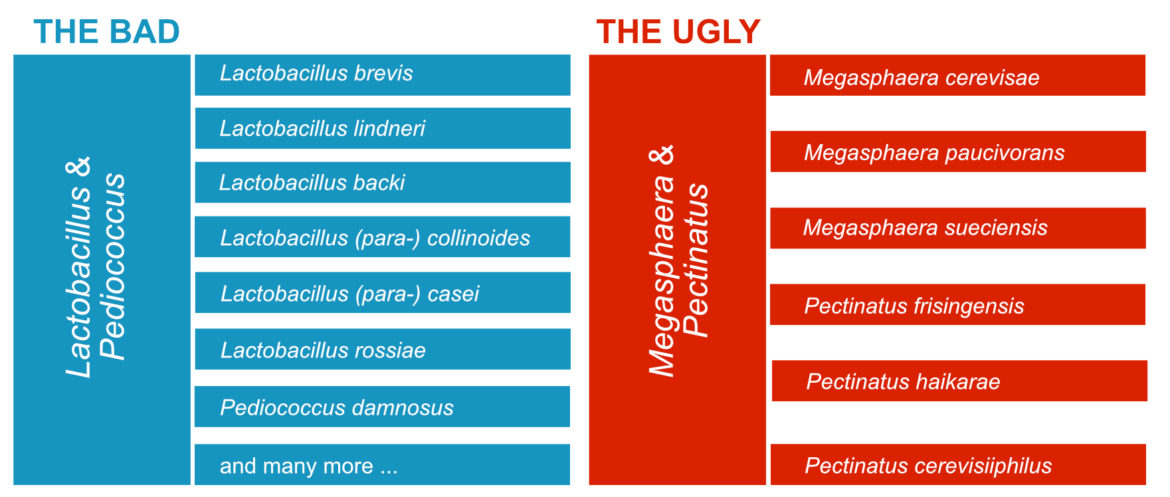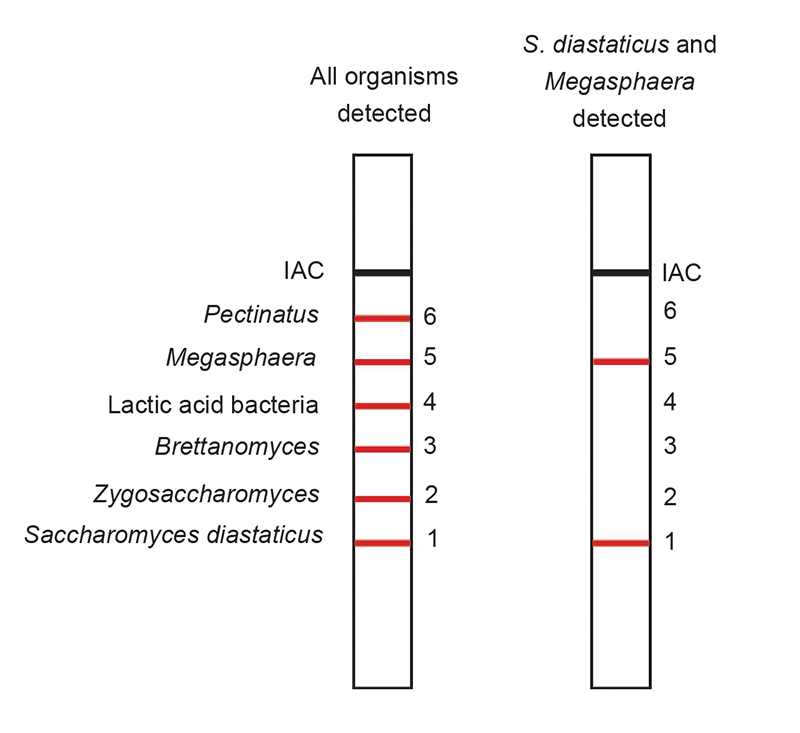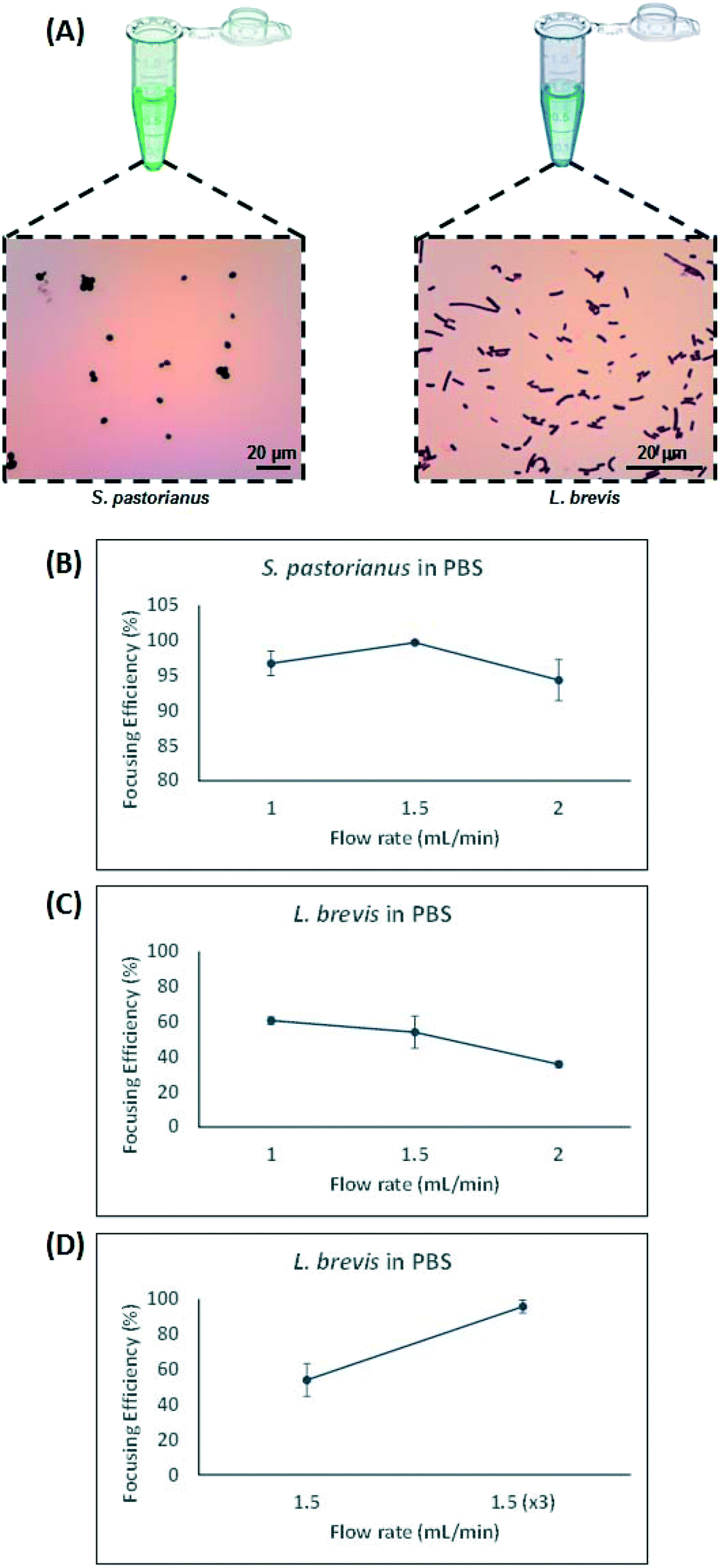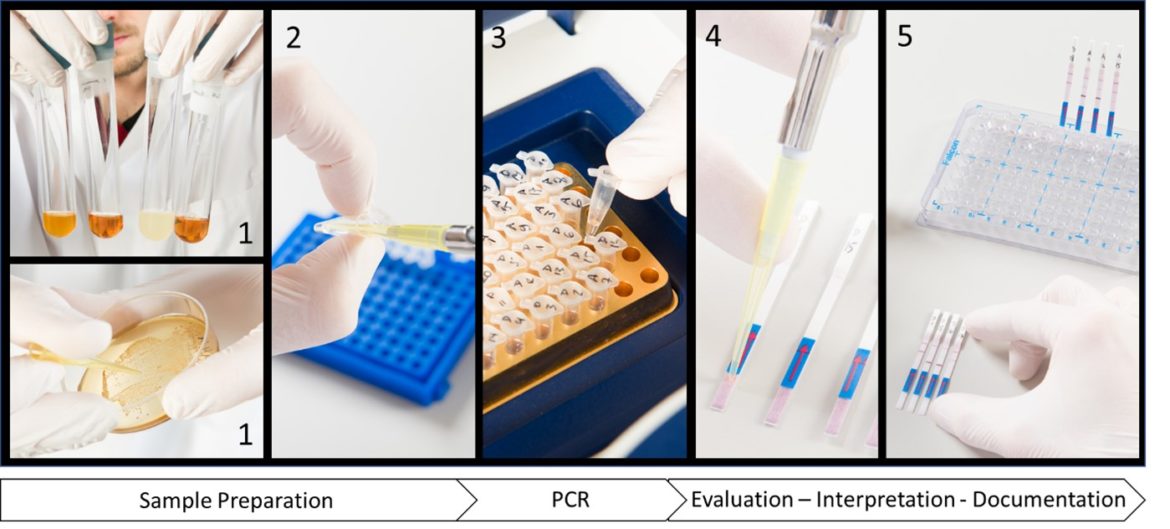Pastorianus strains although in the final. Since improved process technology in modern breweries significantly reduced oxygen content in the final product the role of strictly anaerobic bacteria like Pectinatus and Megasphaera has become more prevalent.

List Of Potential Beer Spoilage Microorganisms Used In This Study Download Scientific Diagram
Although not being pathogenic the microorganisms can cause undesirable odor and off-flavor as well as turbidity in beer.
. Later in the event of neglect in celJar treat. Beer is considered an unfavorable substrate of growth for many microorganisms however there are a limited number of bacteria and yeasts which are capable of growth and may spoil beer especially if it is not pasteurized or sterile-filtered as craft beer. The spoilage characteristic associated with Pediococcus spp.
Lactic Acid Bacteria are the most common contaminant in fermented wort and beer. Beer is a poor and rather hostile environment for most microorganisms. Stages of fermentation and during racking.
Craft beer is more susceptible to microbial spoilage because it does not have a pasteurization or filtration process with lactic acid bacteria LAB being the most common beer spoilage microorganism. Latest Beer Science By Edgar Huitema Fortification of malting grains with beneficial microbes may keep spoilage bacteria at bay. GEN-IAL QuickGEN Beer yeast and bacteria differentiation low.
The following bacteria and yeasts are differentiated. Its ethanol concentration and low pH is lower than most bacteria can tolerate for growth. Bacterial spoilage often leads to visible turbidity sediment formation acidification off-flavors and ropiness.
Lactobacillus brevis Pediococcus damnosus Megasphaera spp Pectinatus spp will always cause spoilage. Neil916 Talk. They are by far the most encountered beer spoilers and considered to be.
Furthermore the high carbon dioxide concentration and extremely low oxygen content makes beer a near to anaerobic medium. The most prominent culprits of beer spoilage microorganisms are bacteria and wild yeast. Three categories of beer spoilers can be distinguished.
They can be responsible for up to 90 of microbial beer spoilage incidents Taskila et al. The main defects caused by various spoilage-causing microorganisms are. A Draught beers in cask or kegCon.
Paradoxically it is because of beers harsh environment that bacteria are forced to use alternate internal pathways to survive and in doing so produce some of the chemicals connected with spoilage eg. Pediococcus damnosus is the most common spoilage organism of the genus found in breweries that produce lager beer. For brewing industry beer spoilage bacteria have been problematic for centuries.
Spoilage organisms are mainly lactic acid bacteria mostly the genera Lactobacillus and Pediococcus or they are obligate anaerobes of the species Pectinatus and Megasphaera. Abstract For brewing industry beer spoilage bacteria have been problematic for centuries. Bacterial spoilage often leads to visible turbidity sediment formation acidification off-flavors and ropiness.
Lactic acid bacteria and yeast can contaminate beer and wine and cause spoilage Filtration is done numerous times in the production of wine and beer - the integrity of these membranes is key to a good quality product Real-time data from ATP-testing can tell you the efficacy of sanitation control. The spoilage by pediococci is somewhat similar to that caused by lactobacilli. CiteSeerX - Document Details Isaac Councill Lee Giles Pradeep Teregowda.
They precisely target only the Real Beer Spoilers ignoring species that cant harm beer. Into cask the beer usually picks up some. The organisms are seldom found in the pitching yeast but are found at times during the late fermentation or in the final beer.
Lactobacilli Pediococci Acetic acid bacteria READ MORE. Source and Licence Malts briefly explained. Bacteria Generally bacteria do not survive in beer however certain species - including Lactobacillus and Pediococcus often referred to as lactic acid bacteria LAB - can.
Obligate beer spoilage bacteria eg. The aim of this study was to isolate LAB in a craft brewery and their characterization from a food. PIKA has distilled 20 years of microbiological quality control experience into simple effective test kits for breweries.
Bacteria normally present in the beer are. Paradoxically it is because of beers harsh environment that bacteria are forced to use alternate internal pathways to survive and in doing so produce some of the chemicals connected with spoilage eg. Beer also contains bitter hop compounds which are.
Mold species of Alternaria Cladosporium Epicoccum and Fusarium are found in spoilage beer. The growth of these harmful bacteria causes quality deficiencies that range from impaired flavour and aroma to acidification of the product haze sedimentation and in the most extreme cases slime formation. Within them two groups are recognised as the most common contaminants.
They include some lactic acid bacteria such as Lactobacillus brevis Lactobacillus lindneri and Pediococcus damnosus and some Gram-negative bacteria such as Pectinatus cerevisiiphilus Pectinatus. They include some lactic acid bacteria such as Lactobacillus brevis Lactobacillus lindneri and Pediococcus damnosus and some Gram-negative bacteria such as Pectinatus cerevisiiphilus Pectinatus frisingensis and Megasphaera cerevisiae. Beer Spoilage Organisms Bacteria.
This article will discuss a new way to control the levels of microbial contaminants in malted grain and increase its overall quality. Run tests with only 20 minutes hands-on time. Intended useDifferentiation of beer spoilage bacteria and yeast in beer and mixed beer drinks.
Much to the regret of brewers beer contamination with beer spoilage bacteria is not uncommon. No prior lab experience or dedicated staff required. Beer-spoilage microorganisms cause an increase of turbidity and unpleasant flavors in beer.

Rapid Detection Of Beer Spoiling Bacteria Milenia Genline

6 In 1 Beer Spoilage Pcr Micro Test Kit Microbiologique
![]()
Detection Of Megasphaera And Pectinatus

Culture Method For Beer Quality Control

Pectinatus Cerevisiiphilus An Overview Sciencedirect Topics

Comparison Of Different Technologies For Detection Of Beer Spoilage Download Table

Pdf The Common Spoilage Microorganisms Of Beer Occurrence Defects And Determination A Review

Rapid Separation And Identification Of Beer Spoilage Bacteria By Inertial Microfluidics And Maldi Tof Mass Spectrometry Lab On A Chip Rsc Publishing Doi 10 1039 C9lc00152b

Main Spoilage Microorganisms Of Beer Download Scientific Diagram

Quickgen Pentaplex Pcr Kit Beer Spoilage Bacteria And Yeast Screening Food Feed Analysis

Pdf Beer Spoilage Bacteria And Hop Resistance Semantic Scholar

Rapid Detection Of Beer Spoiling Bacteria Milenia Genline

The Changing Face Of Microbial Quality Control Practices In The Brewing Industry Introducing Mass Spectrometry Proteomic Fingerprinting For Microbial Identification Turvey 2017 Journal Of The Institute Of Brewing Wiley Online Library

On The Trail Of Beer Spoilage Bacteria Food Feed Analysis
![]()
Microbial Quality Control Of Beer Beer Spoilage Bacteria

Phylogeny Of Primary Beer Spoilage Bacteria The Maximum Likelihood Download Scientific Diagram
